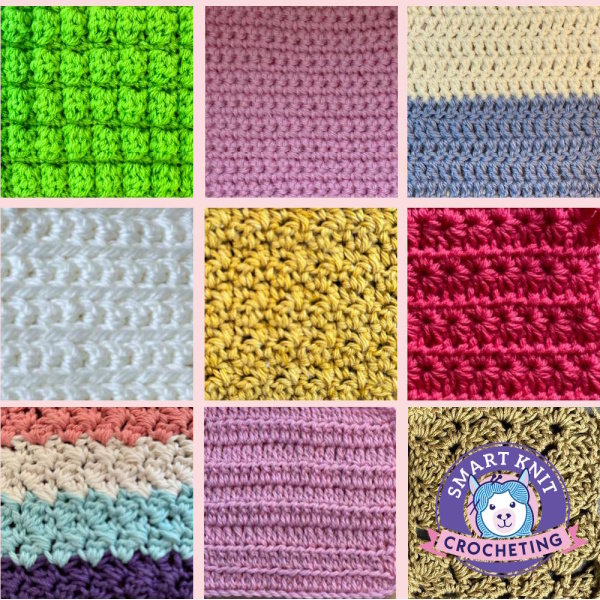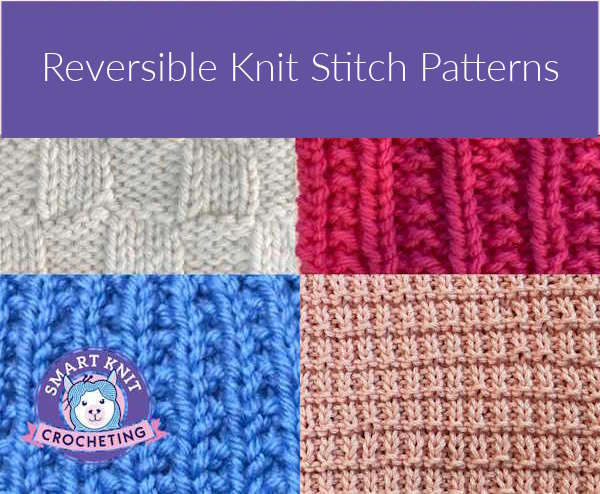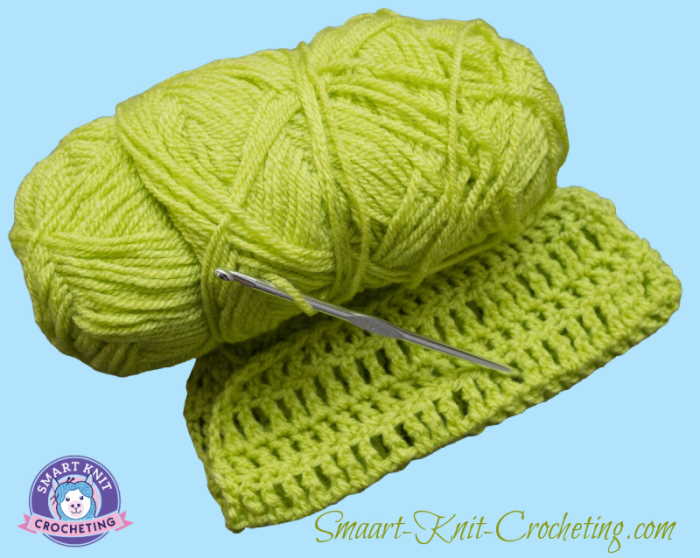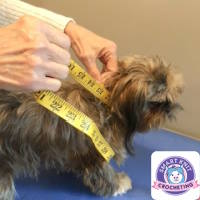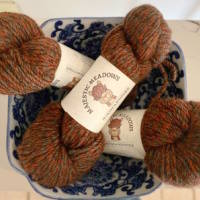- Home
- Cable Stitches
- Right-Leaning 2x2 Cable
How to Knit a Right-Leaning 2/2 Cable (2/2RC or C4B)
C4B stands for Cable 4 Back, a simple right-leaning cable where two stitches cross over two. You use a cable needle to temporarily hold the first 2 stitches behind your work, knit the next 2 stitches, then return to the held stitches and knit them. You will also see it referred to as a 2/2 RC.
This creates a smooth, twisted cable that leans to the right. It’s often paired with C4F (Cable 4 Front) in rope cables, braids, and columns. This is likely the first type of cable stitch that beginners learn.
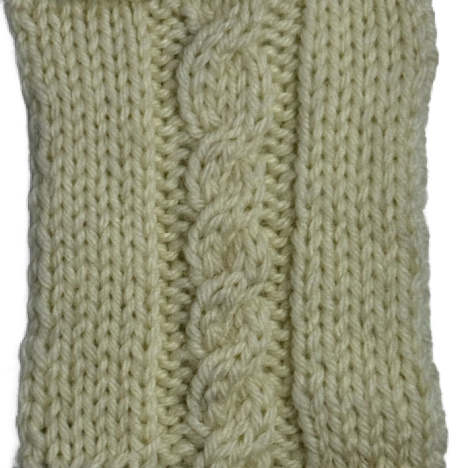
Many Names, All Meaning the Same Thing
Alternate Names for C4B (Cable 4 Back)
| Abbreviation or Term | Description |
|---|---|
| C4B | Cable 4 Back – Slip 2 stitches to cable needle and hold in back, knit 2 from left needle, then knit 2 from cable needle. |
| 4-st RC | 4-stitch Right Cross – 4 stitches total, crossed right by holding 2 in back. |
| 2/2 RC | 2 over 2 Right Cross – 2 stitches crossing over 2, leaning right. |
| RT (Right Twist) | Sometimes used for small right-leaning twists over 2 stitches (not always interchangeable, but similar idea). |
| Right-Leaning Cable | General description of the visual effect created by C4B. |
Cable Charts
Many knitters prefer to work from a chart as opposed to written instructions. Here is an example of how the 2/2 RC or C4F would look in chart form.
 From the Craft Yarn Council
From the Craft Yarn CouncilStep-by-Step Instructions: How to Knit C4B
Supplies You Will Need
- Yarn
- Knitting Needles (straight or circular)
- Cable Needle
- Scissors
A tutorial for making a swatch is provided below.
General Instructions
Work to the point where you want to make your cable.
Slip two stitches, purlwise onto the cable needle.
Knit the next two stitches still on the left needle.
Knit the two stitches from the cable needle.
Where to Use C4B
- In repeated columns to create rope-like cables
- Paired with C4F for symmetrical twists
- In cowls, scarves, mitts, or sweater panels
Make a Practice Swatch
It's always easier to practice a new technique with a small project rather than in an actual project. This helps you learn and master it without worrying about messing up your project.
The following pattern includes the cable twist, separated by two purl stitches. There is also a six-stitch stockinette border on either side, which is optional. The border is there to help your swatch lay flat, but if you prefer to do the cable only, you will need to cast on eight stitches.
Abbreviations
K = knit
P = Purl
RS = Right Side
WS = Wrong Side
St/s = stitch/stitches
cn = cable needle
C4B (also known as 2/2 RC) = Slip 2 stitches onto cn and hold in back; knit two stitches from left needle, then k2 stitches from the cn.
2/2 RC or C4B Practice Pattern (Mini Swatch)
Try this 4-stitch cable swatch with purl panels and a 6-stitch stockinette border to make the twist stand out:
Cast on: 20 stitches
Set up rows: Knit 2 rows
Repeat the following 8-row pattern:
Row 1 (RS): K6, P2, K4, P2, K6.
Row 2 (WS): P6, K2, P4, K2, P6.
Row 3: K6, P2, C4B, P2, K6.
Row 4: Repeat Row 2.
Repeat rows 1 through 4 until you reach your desired length. Work two more rows in stockinette stitch, then bind off.
Tips for Success
- Use a smooth yarn in a light color so you can see the twist. A worsted-weight, CKC #4 works well for beginners.
- Choose a cable needle that is the same size or smaller than the needles you are using.
- Don’t pull too tightly on the working yarn when crossing stitches.
- Practice holding the cable needle comfortably — resting it behind your work can feel awkward at first, but it gets easier.
- Mark the row where you cable so you remember to space them evenly.
Frequently Asked Questions About the Right-Leaning 2/2 Cable
What does C4B mean in knitting?
What does C4B mean in knitting?
C4B stands for Cable 4 Back. It means you slip 2 stitches to a cable needle, hold them at the back of your work, knit the next 2 stitches, and then knit the 2 held stitches. It is also called a 2/2 RC
How often should I repeat C4B in a pattern?
How often should I repeat C4B in a pattern?
That depends on your design. Many beginner swatches or rope cables repeat the C4B every 6 or 8 rows to keep the twist even and the fabric flat.
Do I need a cable needle to knit C4B?
Do I need a cable needle to knit C4B?
While a cable needle is helpful for learning, experienced knitters sometimes cross stitches without one. For beginners, a cable needle or DPN is recommended.
What’s the difference between C4B and C4F?
What’s the difference between C4B and C4F?
C4B (Cable 4 Back) leans to the right, while C4F (Cable 4 Front) leans to the left. The difference lies in whether you hold the cable needle behind or in front of your work.
Is C4B the same as 2/2 RC?
Is C4B the same as 2/2 RC?
Yes. C4B and 2/2 RC (2 over 2 Right Cross) describe the same cable technique. They are just different naming conventions used in patterns and charts.
Pin Now, Practice Later
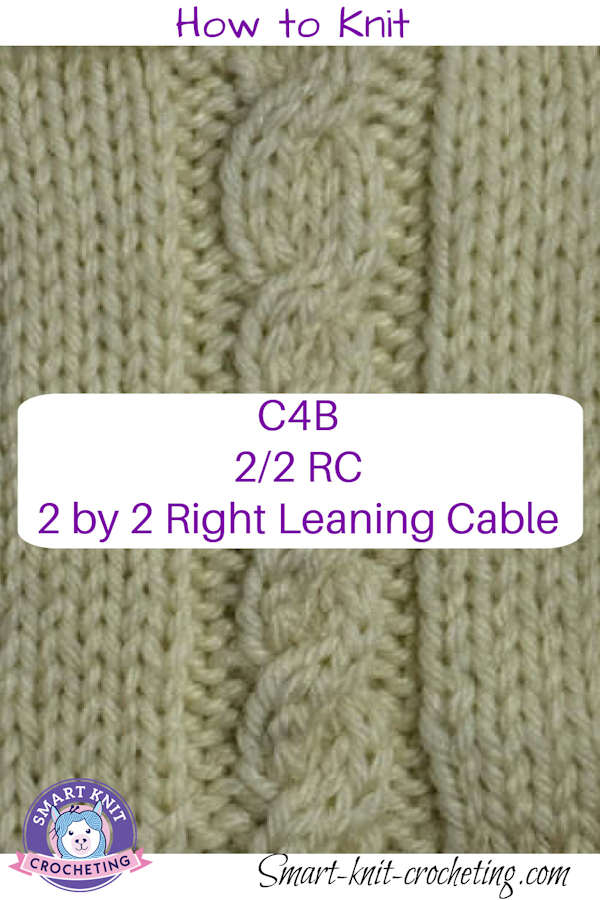
Summary
C4B or 2/2 RC is a foundational cable technique that’s easy to learn and looks elegant. Once you’re comfortable crossing 2 over 2 with a cable needle, you can explore other cable variations, including braids, horseshoes, and twisted ribs.

